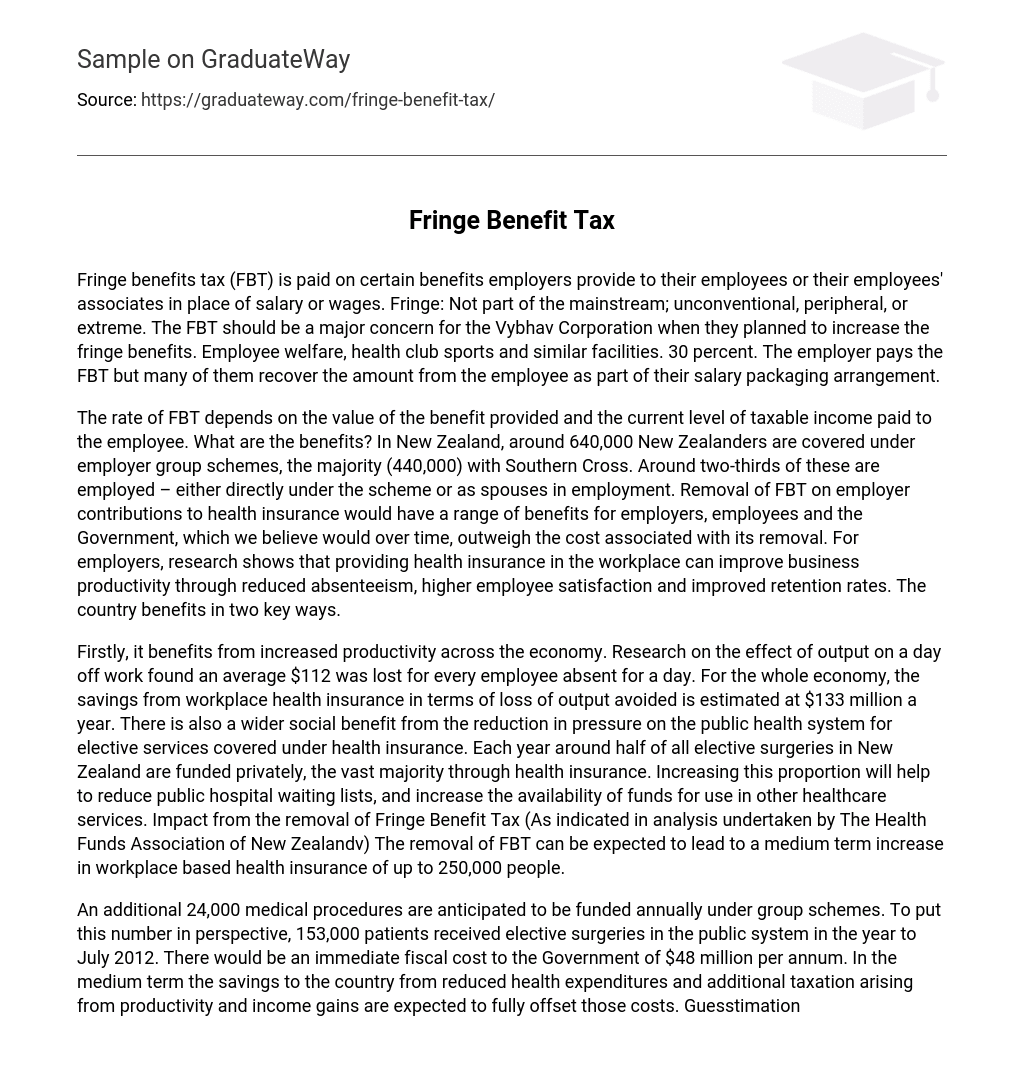Fringe benefits tax (FBT) is paid on certain benefits employers provide to their employees or their employees’ associates in place of salary or wages. Fringe: Not part of the mainstream; unconventional, peripheral, or extreme. The FBT should be a major concern for the Vybhav Corporation when they planned to increase the fringe benefits. Employee welfare, health club sports and similar facilities. 30 percent. The employer pays the FBT but many of them recover the amount from the employee as part of their salary packaging arrangement.
The rate of FBT depends on the value of the benefit provided and the current level of taxable income paid to the employee. What are the benefits? In New Zealand, around 640,000 New Zealanders are covered under employer group schemes, the majority (440,000) with Southern Cross. Around two-thirds of these are employed – either directly under the scheme or as spouses in employment. Removal of FBT on employer contributions to health insurance would have a range of benefits for employers, employees and the Government, which we believe would over time, outweigh the cost associated with its removal. For employers, research shows that providing health insurance in the workplace can improve business productivity through reduced absenteeism, higher employee satisfaction and improved retention rates. The country benefits in two key ways.
Firstly, it benefits from increased productivity across the economy. Research on the effect of output on a day off work found an average $112 was lost for every employee absent for a day. For the whole economy, the savings from workplace health insurance in terms of loss of output avoided is estimated at $133 million a year. There is also a wider social benefit from the reduction in pressure on the public health system for elective services covered under health insurance. Each year around half of all elective surgeries in New Zealand are funded privately, the vast majority through health insurance. Increasing this proportion will help to reduce public hospital waiting lists, and increase the availability of funds for use in other healthcare services. Impact from the removal of Fringe Benefit Tax (As indicated in analysis undertaken by The Health Funds Association of New Zealandv) The removal of FBT can be expected to lead to a medium term increase in workplace based health insurance of up to 250,000 people.
An additional 24,000 medical procedures are anticipated to be funded annually under group schemes. To put this number in perspective, 153,000 patients received elective surgeries in the public system in the year to July 2012. There would be an immediate fiscal cost to the Government of $48 million per annum. In the medium term the savings to the country from reduced health expenditures and additional taxation arising from productivity and income gains are expected to fully offset those costs. Guesstimation





